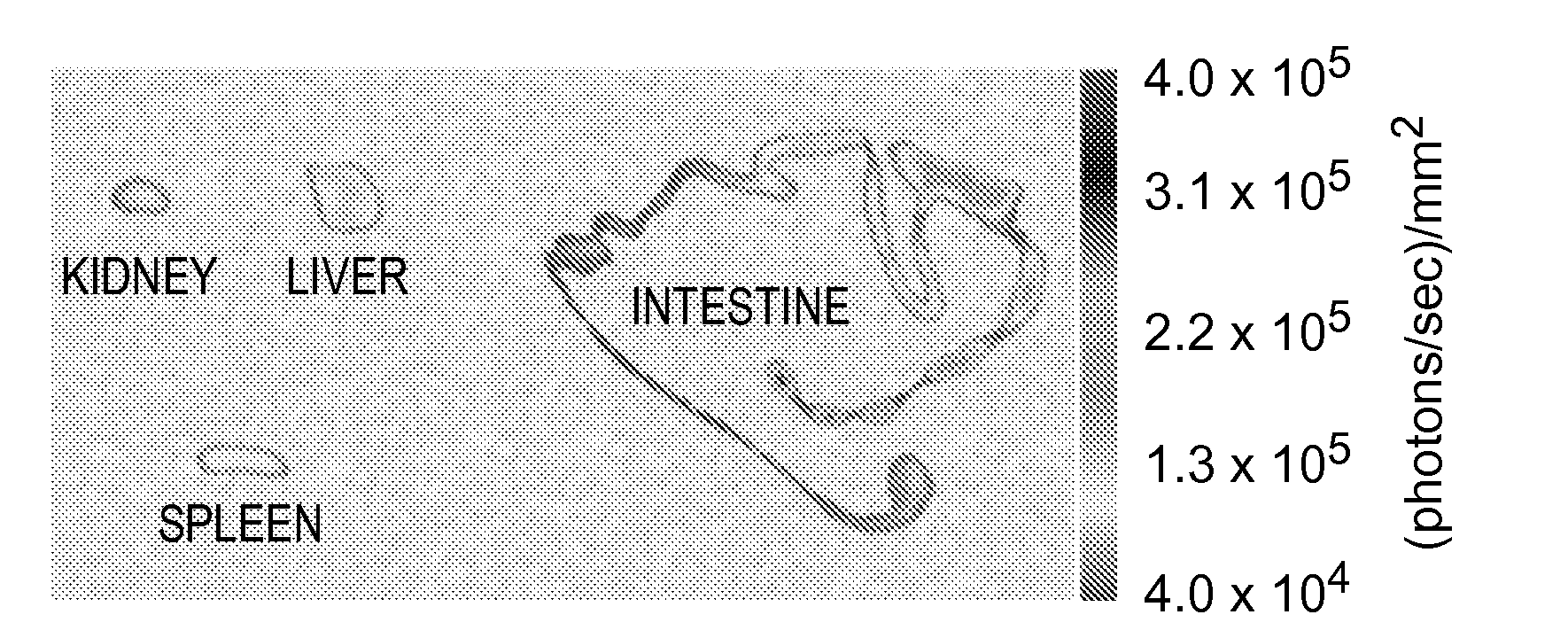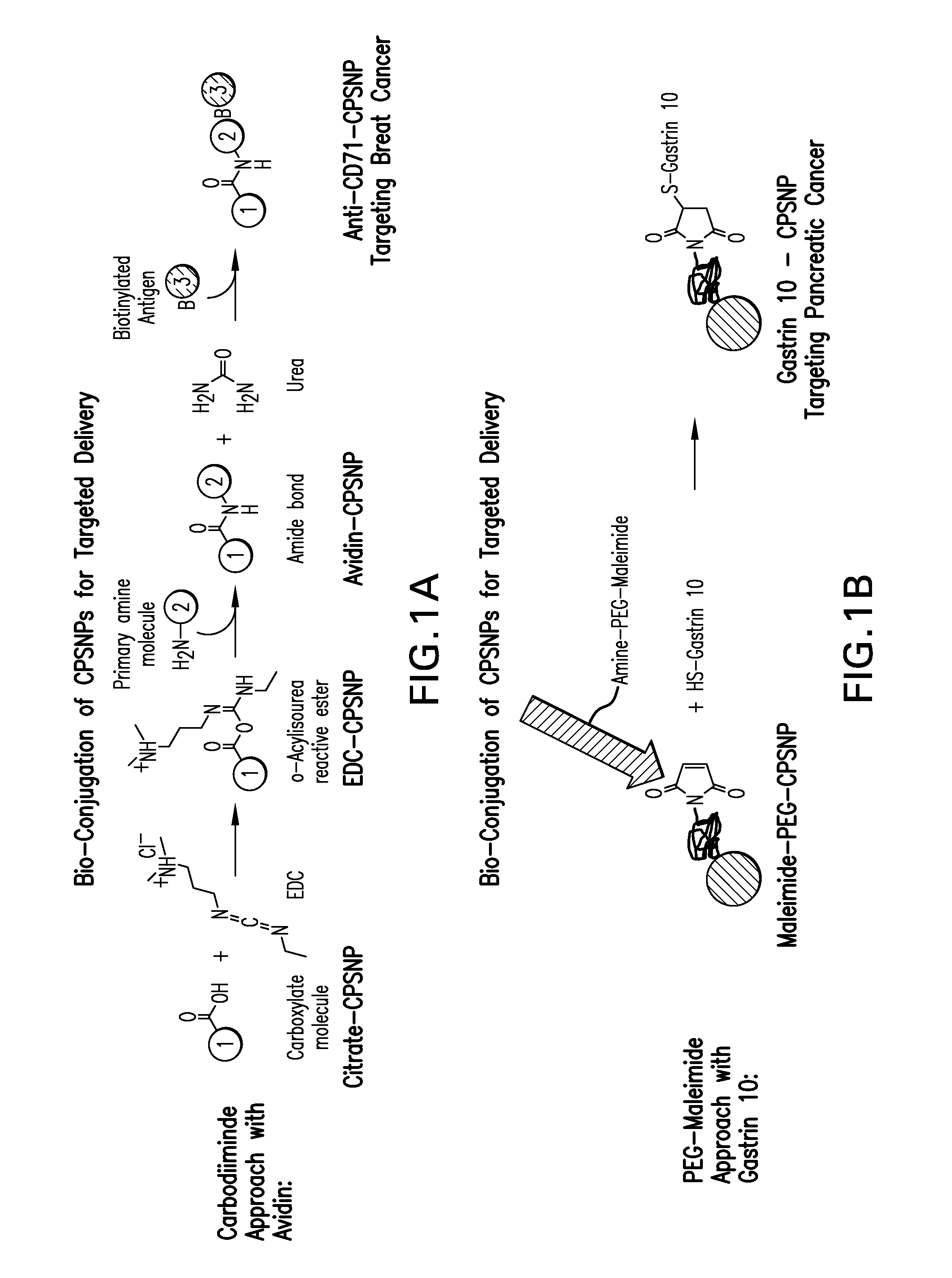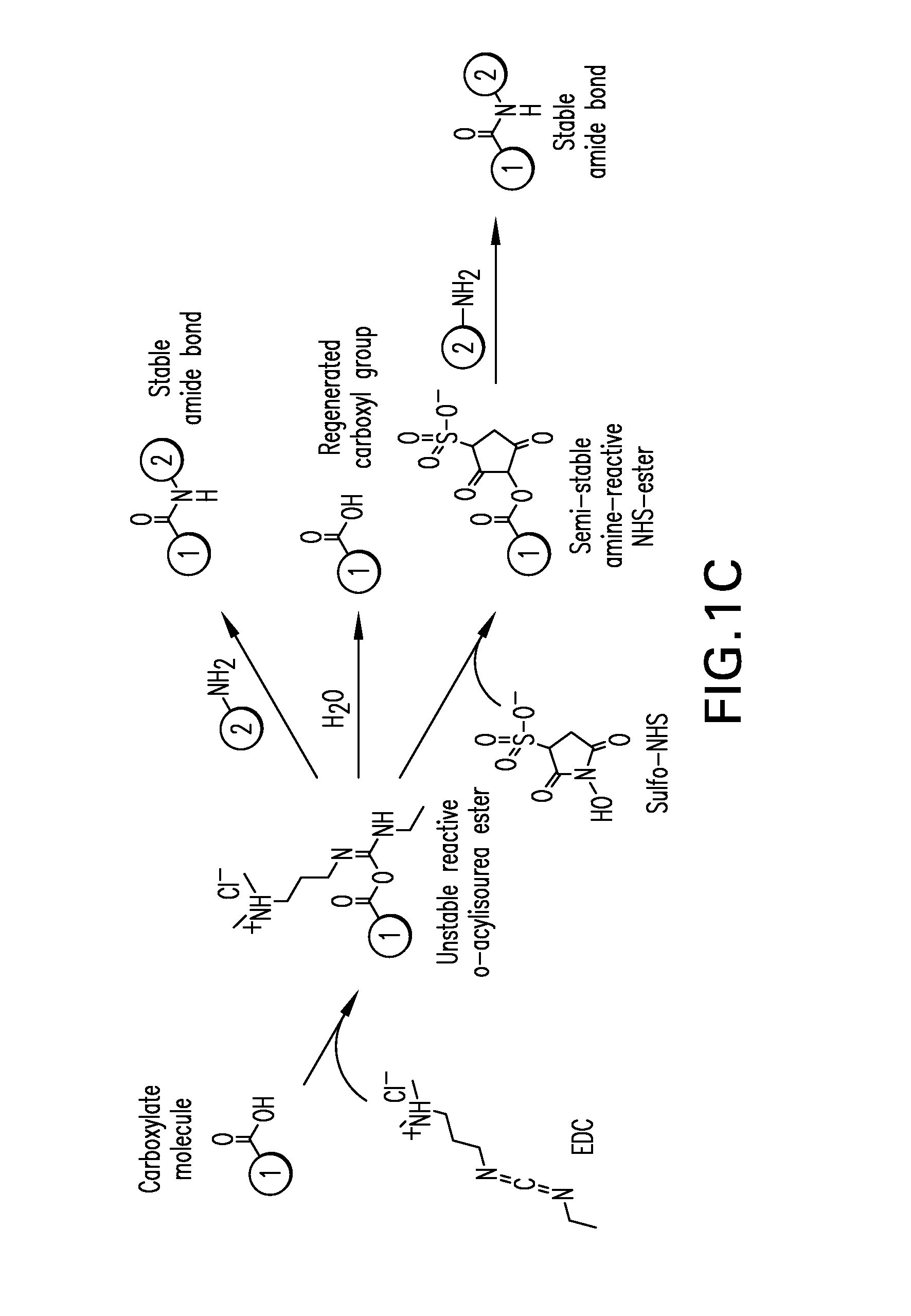Bioconjugation of Calcium Phosphosilicate Nanoparticles For Selective Targeting of Cells In Vivo
a bioconjugation and calcium phosphosilicate technology, applied in the direction of powder delivery, peptide/protein ingredients, macromolecular non-active ingredients, etc., can solve the problems of high mortality rate, late diagnosis, lack of timely sensitive imaging modalities,
- Summary
- Abstract
- Description
- Claims
- Application Information
AI Technical Summary
Problems solved by technology
Method used
Image
Examples
example 1
[0033]The first coupling strategy schematically outlined in FIG. 1A employs an avidin molecule coupled to citrate functionalized CPNPs. (A variety of carboxylate surface functionalizations may be used in the preparation of the CPNPs. Citrates are considered particularly suitable sources of carboxylate surface functionalization. In some embodiments, the surface functionalization (e.g., citrate) is specifically adsorbed to the calcium phosphosilicate nanoparticle. Avidin has four potential binding sites for biotin. As is well known in the art, many biotinylated biological molecules of interest are available that can be used to target specific cell types. An avidin-CPNP is described that can be used to non-covalently bioconjugate targeting biological molecules to the CPNPs by coupling the biotinylated targeting molecule of interest to avidin-CPNPs. In this patent document three working examples describe CPNP bioconjugation to human holotransferrin, anti-CD71 antib...
example 2
[0034]A second covalent coupling strategy schematically outlined in FIG. 1B uses a PEG-maleimide reaction to bioconjugate a targeting molecule and is exemplified by the coupling of decagastrin (gastrin-10). Targeting molecular moieties suitable for use with this method include those having a sulfhydryl-group such as antibodies, peptides, ligands, receptors, and the like. Citrate functionalized CPNPs are reacted with a carbodiimide and a maleimide polyethylene glycol amine to yield a CPNP comprising a surface moiety having a maleimide terminal group that can then be reacted with a binding moiety having a sulfhydryl group. Ethyl-N-(3-dimethylaminopropyl)-N′ hydrochloride carbodiimide is considered especially suitable for the disclosed method for the carbodiimide linker group. The maleimide group is suitably bound to the surface of the nanoparticle, but can, in some embodiments, be bound to the binding moiety. PEG-maleimide coupling of decagastrin (gastrin-10...
example 3
Covalent Coupling via N-Hydroxysulfosuccinimide (Sulfo NHS)
[0035]The bioconjugation of anti-CD96 and anti-CD117 antibodies and other targeting moieties not possessing a thiol group requires a different approach since the maleimide-coupling approach relies on the availability of thiol groups on the molecule to be conjugated, which if unavailable, necessitates thiol introduction under conditions that may jeopardize the integrity of the biomolecules. To avoid this potential problem and provide a generalized coupling method that does not rely on the availability of thiol groups, a third coupling strategy outlined in FIG. 1C was developed that utilizes a multistep synthesis using EDAC and Sulfo NHS.
[0036]As will be appreciated by those skilled in the art, targeting molecular moieties suitable for bioconjugation may include antibodies, polypeptides, nucleic acids such as siRNAs, ligands, receptors and those moieties that target signaling proteins, angiogenesis factors, metalloproteases, a...
PUM
| Property | Measurement | Unit |
|---|---|---|
| pH | aaaaa | aaaaa |
| mean zeta potential | aaaaa | aaaaa |
| mean zeta potential | aaaaa | aaaaa |
Abstract
Description
Claims
Application Information
 Login to View More
Login to View More - R&D
- Intellectual Property
- Life Sciences
- Materials
- Tech Scout
- Unparalleled Data Quality
- Higher Quality Content
- 60% Fewer Hallucinations
Browse by: Latest US Patents, China's latest patents, Technical Efficacy Thesaurus, Application Domain, Technology Topic, Popular Technical Reports.
© 2025 PatSnap. All rights reserved.Legal|Privacy policy|Modern Slavery Act Transparency Statement|Sitemap|About US| Contact US: help@patsnap.com



